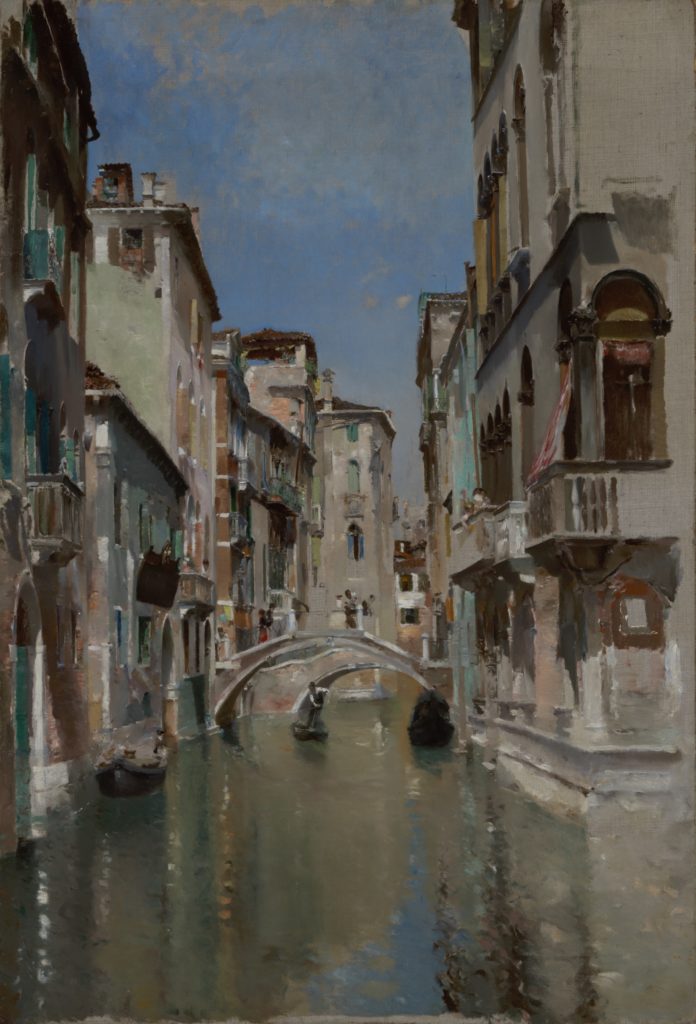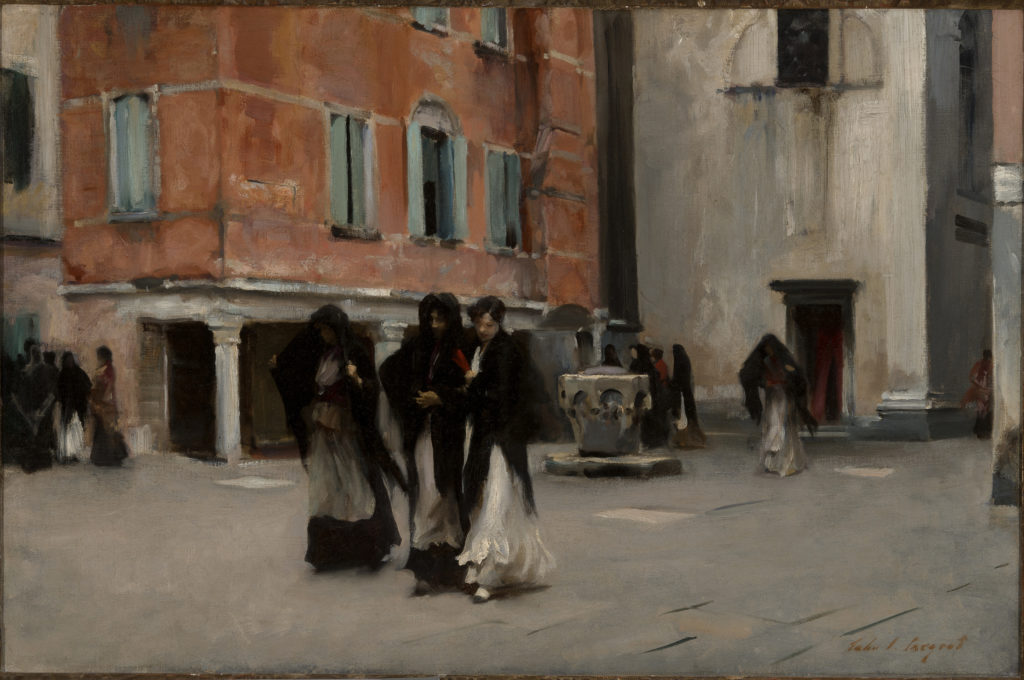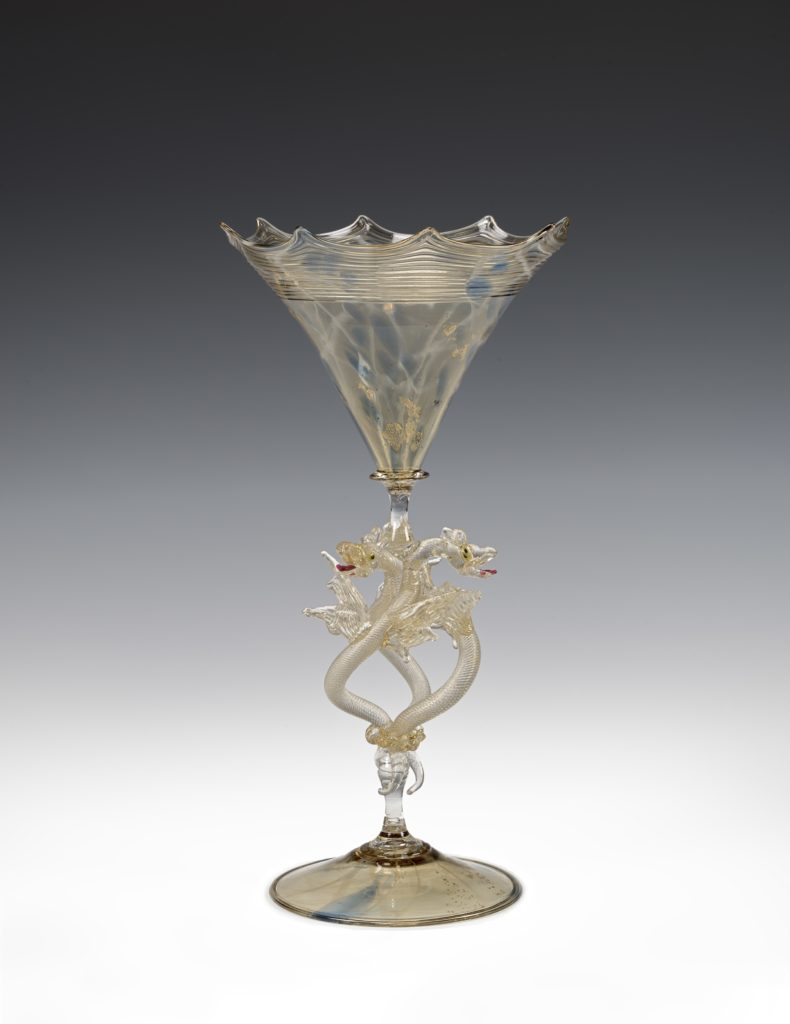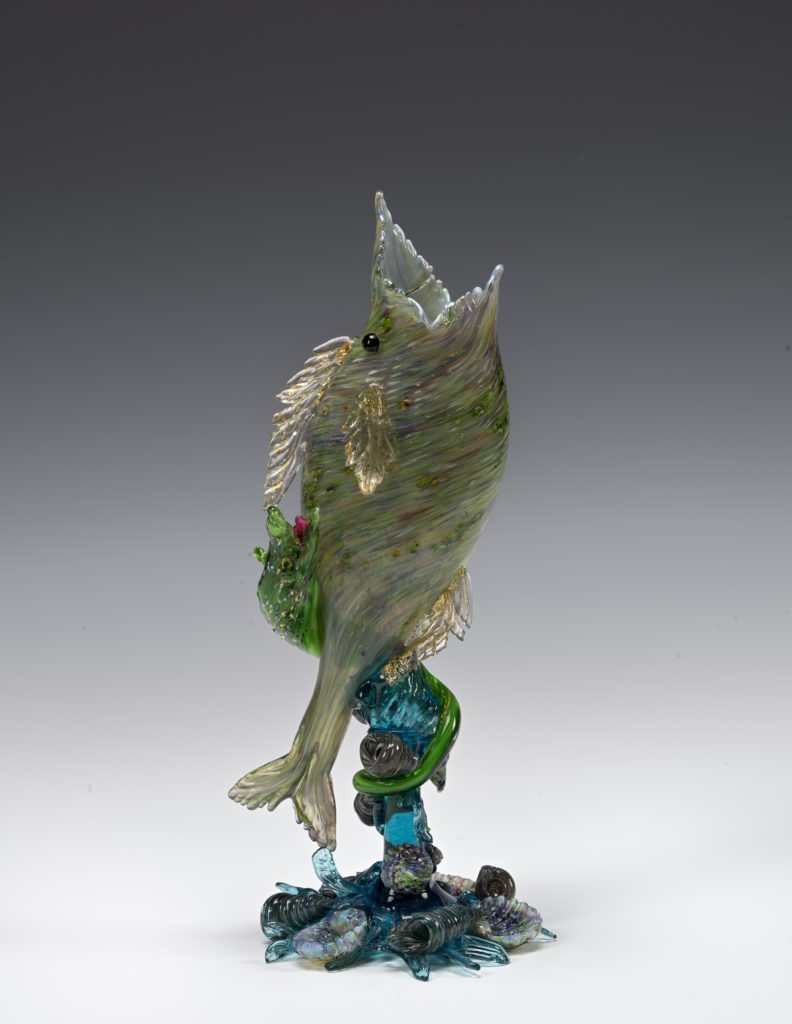Global Inspiration
The Amon Carter Museum of American Art (the Carter) has announced the presentation of the nationally touring Sargent, Whistler, and Venetian Glass: American Artists and the Magic of Murano.

The exhibition, that will be on view at the Carter June 26 through September 11, 2022, brings to life the Venetian glass revival of the late 19th century and the artistic experimentation the city inspired for visiting artists. Organized by the Smithsonian American Art Museum, Sargent, Whistler, and Venetian Glass is the first comprehensive examination of American tourism, artmaking, and art collecting in Venice, revealing the glass furnaces and their new creative boom as a vibrant facet of the city’s allure. To complement the exhibition, the Carter has invited Texas–based artist Justin Ginsberg to set up a glass kiln on the Museum’s lawn, where he will create a new site-specific work over the course of the summer. The resulting glass installation will be on view in the Museum’s main gallery.

Robert Frederick Blum, Canal in Venice, San Trovaso Quarter, ca. 1885, oil on canvas, Smithsonian American Art Museum, Gift of William T. Evans, 1909.7.7
“The Carter is pleased to present Sargent, Whistler, and Venetian Glass: American Artists and the Magic of Murano, the completion of years of research by our colleagues at the Smithsonian American Art Museum,” stated Andrew J. Walker, Executive Director. “American art is so often a story of global inspiration. We are committed to presenting the wide range of artistic creation in America throughout its history. Some of the greatest artists in American history were permanently shaped by travels to Venice—a crossroads for international trade and exchange. We are especially thrilled to be invite artist Justin Ginsberg to work on our grounds, giving visitors the chance to witness glassmaking first-hand and watch a new piece of art come to life.”
Between 1860 and 1915, the renowned glassmaking industry on the Venetian island of Murano experienced intense growth. This Venetian glass revival coincided with a surge in Venice’s popularity as a destination for American tourists, many of whom visited the glass furnaces and eagerly collected ornate handblown goblets decorated with floral and animal motifs. As its fame and quality grew, Venetian glass became more than a travel souvenir; patrons saw these as museum-quality works of fine art. Collector interest led to frequent depictions of Italian glassmakers and glass objects by prominent American artists of the era, including John Singer Sargent and James McNeill Whistler. During the same time, Venice’s other decorative arts industries, most notably in mosaics, lace, and jewelry, saw a resurgence, in part through American patronage. Despite this prestige, shifts in tastes have shrouded the lasting impact of Venetian glassware on the larger art world. This exhibition displays individual works of glass with long histories in American hands—objects that crossed the Atlantic more than a century ago—in conversation with paintings, watercolors, and prints by American artists who found inspiration in Venice.

John Singer Sargent, Leaving Church, Campo San Canciano, Venice, ca. 1882, oil on canvas, The Collection of Marie and Hugh Halff
“I can’t wait for our Texas communities to see the sparkling splendor of glass goblets and the twinkling of marvelous mosaics and to know that American artistic icons like Sargent and Whistler were blown away by the creativity of Venice,” said Maggie Adler, Curator of Paintings, Sculpture, and Works on Paper as well as the curator of the Carter’s presentation. “This exhibition will take us back in time to understand the impact of Italian glass on American art, literature, and design, as well as ideas at the time about gender, labor, and class relations. The role of women and unrecognized Venetian artisans takes center stage alongside some of the United States’ most prominent painters.”
Sargent, Whistler, and Venetian Glass brings together more than 140 artworks, and it features, in addition to rare etchings by Whistler and major oil paintings by Sargent, work by Robert Frederick Blum, William Merritt Chase, Charles Caryl Coleman, Louise Cox, Frank Duveneck, Ellen Day Hale, Thomas Moran, Maxfield Parrish, Maurice Prendergast, and Julius LeBlanc Stewart. More than a quarter of the objects in the groundbreaking exhibition are from the Smithsonian American Art Museum’s collection, joining loans from more than 45 prestigious museums—such as the Metropolitan Museum of Art and the Art Institute of Chicago—and from private collections. Paintings and prints intermingle among rarely seen Venetian glass mosaic portraits and glass cups, vases, and urns by the leading glassmakers of Murano, including members of the legendary Seguso and Barovier glassworks. Several artworks were conserved specifically for inclusion in the exhibition, including a stunning Byzantine revival gold-and-glass mosaic necklace.

Attributed to Giuseppe Barovier or Benvenuto Barovier, Conical Goblet with Entwined Serpents Stem, ca. 1880s, blown and applied hot-worked glass, Smithsonian American Art Museum, Gift of John Gellatly, 1929.8.469.7
Unique to the Carter’s presentation is a site-specific glassmaking project by Texas–based artist Justin Ginsberg. His work is part of a multiyear experimental outdoor series developed by the Carter to expand opportunities for visitors to interact with art on the Museum’s grounds. Over the course of the Sargent, Whistler, and Venetian Glass exhibition, Ginsberg will create a glass sculptural work inspired in part by the exhibition. Beginning in mid-June through the end of August 2022, Ginsberg will work with a glass kiln set up on the Museum’s lawn each weekend, pulling glass threads measuring up to 30 feet. At the end of each glassmaking session, Ginsberg will install the threads he has created in the Carter’s main gallery, resulting in a yet-to-be-named glass “waterfall” sculpture. The public will be able to watch Ginsberg at work during his weekend onsite sessions as well as witness the multi-month realization of his site-specific installation.
“The creative potential of glass is certainly not something that belongs solely to the past. Justin Ginsberg’s work brings the art of working with glass into this century,” stated Adler. “He manipulates the tricky material until it is as thin as hair. The installation that will accumulate over time will refract the light, shimmer with the movement of air, and give everyone a stunning effect of having come upon a building rainstorm. I can’t wait to see it evolve!”

Attributed to Vittorio Zanetti, Fish and Eel Vase, ca. 1890, blown and applied hot-worked glass, Smithsonian American Art Museum, Gift of John Gellatly, 1929.8.469.2
Sargent, Whistler and Venetian Glass: American Artists and the Magic of Murano is organized by the Smithsonian American Art Museum. Generous support has been provided by the Gladys Krieble Delmas Foundation, the Embassy of Italy in Washington, D.C., Chris G. Harris, the Raymond J. and Margaret Horowitz Endowment, Janet and William Ellery James, William R. Kenan Jr. Endowment Fund, Maureen and Gene Kim, the Lunder Foundation—Peter and Paula Lunder Family, Lucy S. Rhame, Holly and Nick Ruffin, the Smithsonian Scholarly Studies Awards, Rick and Lucille Spagnuolo, and Myra and Harold Weiss. The accompanying catalog is supported in part by Jane Joel Knox. This exhibition is supported by an indemnity from the Federal Council on the Arts and the Humanities. In-kind support has been provided by Christie’s. The Carter’s presentation of Sargent, Whistler, and Venetian Glass: American Artists and the Magic of Murano and Justin Ginsberg’s installation are generously supported by the Texas Commission on the Arts.


 Sign in
Sign in

